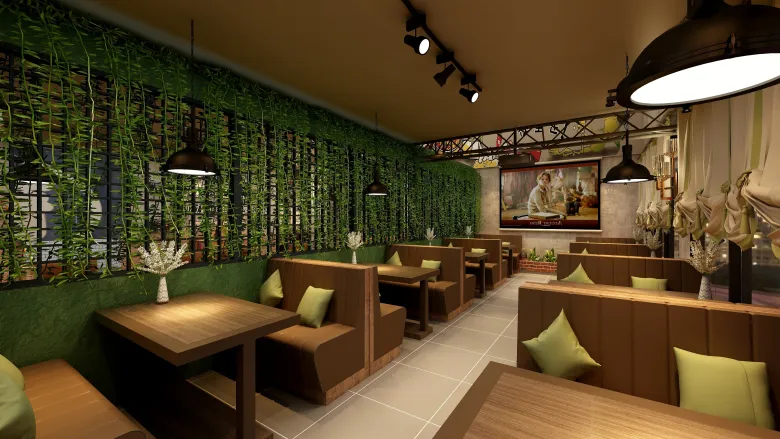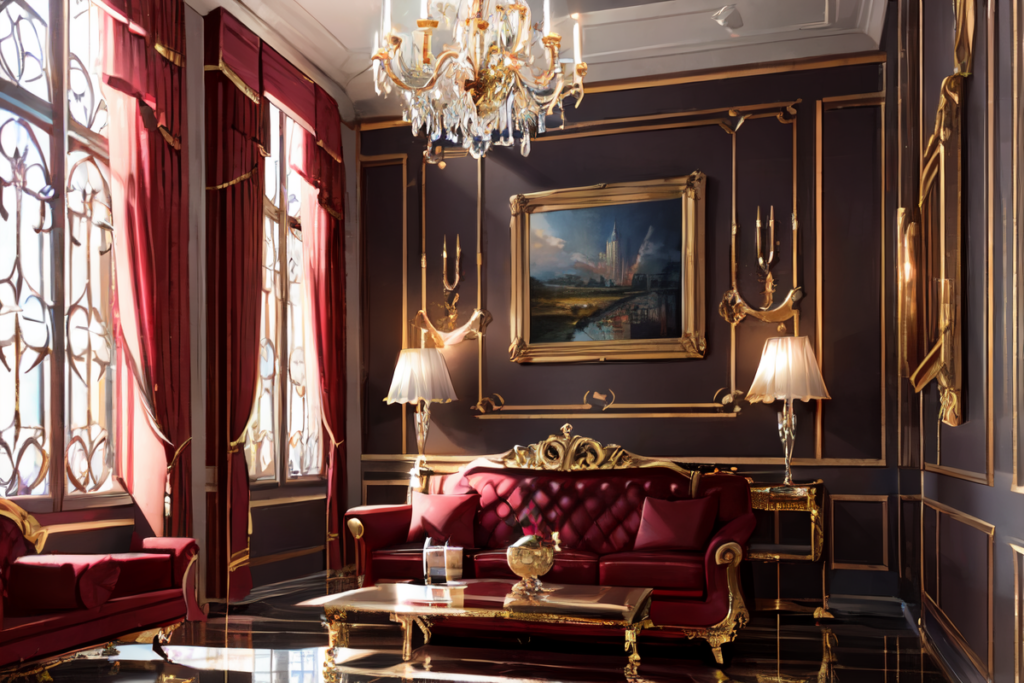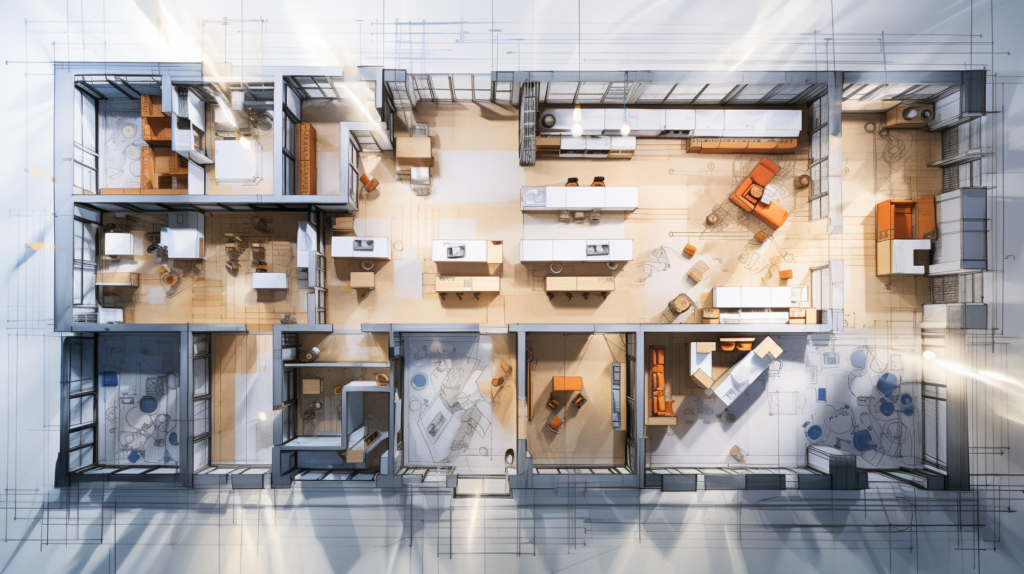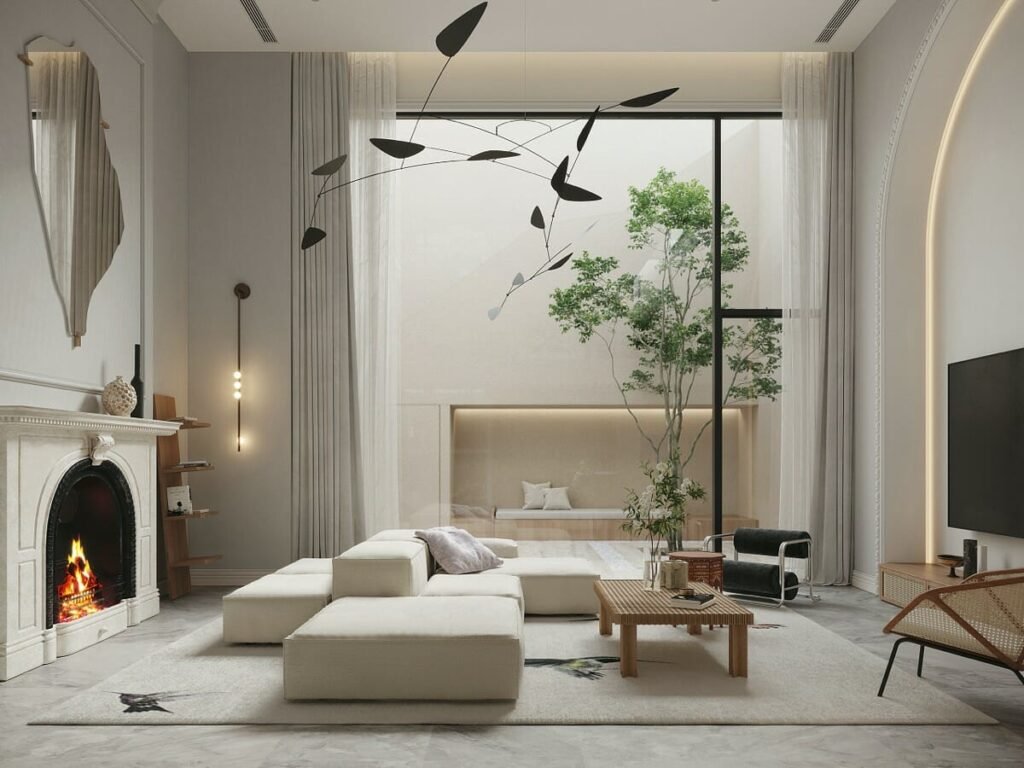Are you tired of dull and boring lighting in your home or workspace? Look no further! In this article, you will discover the secrets to achieving stunning results with ambient lighting techniques. Whether you want to create a cozy and inviting atmosphere or showcase your favorite artwork, ambient lighting can transform any space. Get ready to be amazed as we dive into the world of ambient lighting and uncover the tips and tricks that will make your surroundings truly shine.

Understanding Ambient Lighting
What is ambient lighting?
Ambient lighting refers to the overall illumination in a room or space. It is the base level of lighting that provides general visibility and sets the mood for the environment. Unlike task lighting, which is focused on specific activities, ambient lighting creates a comfortable and inviting atmosphere throughout the entire space.
Importance of ambient lighting in interior design
Ambient lighting plays a crucial role in interior design as it helps create a warm and welcoming atmosphere. It sets the tone for the space and enhances the overall aesthetic appeal. By properly utilizing ambient lighting, you can highlight architectural features, create visual interest, and provide a sense of balance and harmony.
Choosing the Right Bulbs and Fixtures
Types of bulbs for ambient lighting
When selecting bulbs for ambient lighting, it is important to consider the color temperature and energy efficiency. LED bulbs are an excellent choice for ambient lighting as they are energy-efficient and long-lasting. Compact fluorescent bulbs (CFLs) are also a viable option as they provide warm lighting and consume less energy compared to traditional incandescent bulbs.
Factors to consider when selecting bulbs
In addition to the bulb type, there are certain factors to consider when choosing bulbs for ambient lighting. These include the desired brightness level, the color temperature, and the color rendering index (CRI). Brightness level refers to the amount of light emitted by the bulb, while color temperature determines the warmth or coolness of the light. The CRI indicates how accurately the bulb displays colors.
Choosing fixtures for ambient lighting
When it comes to selecting fixtures for ambient lighting, there are various options to choose from. Depending on the desired aesthetic and the layout of the space, you can opt for recessed lights, track lighting, chandeliers, pendant lights, or wall sconces. It is important to consider the size of the fixture and how it will complement the overall design of the room.
Creating the Perfect Balance
Determining the right amount of ambient lighting
To determine the right amount of ambient lighting for a space, you need to consider factors such as room size, ceiling height, and the specific activities that will take place in the room. As a general rule, a larger room with a higher ceiling will require more ambient lighting compared to a smaller space. It is important to strike the right balance between too much and too little lighting to create a comfortable and inviting atmosphere.
Balancing ambient lighting with other types of lighting
While ambient lighting is important, it is equally essential to balance it with other types of lighting, such as task lighting and accent lighting. Task lighting focuses on specific areas where activities like reading or cooking take place, while accent lighting is used to highlight artwork or architectural features. By incorporating multiple layers of lighting, you can create depth and dimension in the room.
Placing fixtures strategically for optimal coverage
Proper placement of fixtures is crucial to achieving optimal coverage with ambient lighting. It is recommended to evenly distribute fixtures throughout the space to minimize shadows and dark corners. In larger rooms, you can use a combination of fixtures to provide uniform illumination. Additionally, consider the height at which fixtures are installed to ensure they provide adequate lighting without causing glare.
Avoiding over or under lighting
Finding the right balance between over and under lighting is essential for creating a pleasant and functional space. Over lighting can lead to excessive glare and discomfort, while under lighting can result in dim and dull spaces. By carefully considering the size of the room, the activities that will take place, and the desired ambiance, you can avoid the pitfalls of over or under lighting.
Utilizing Natural Light
Harnessing natural light for ambient lighting
Natural light can be a valuable asset when it comes to ambient lighting. By maximizing the use of windows, skylights, and other openings, you can invite ample natural light into the space. Natural light not only provides a sense of brightness and openness but also brings a unique quality that artificial lighting cannot replicate.
Tips for maximizing natural light
To make the most of natural light, it is important to keep windows clean and clear of obstructions. Consider using sheer curtains or blinds that can be easily adjusted to control the amount of light entering the room. Additionally, choose light-colored or reflective surfaces for walls and furniture to help bounce light around the space and enhance the overall brightness.
Managing natural light throughout the day
As the sun’s position changes throughout the day, it is important to manage natural light to maintain a consistent level of ambient lighting. Consider using adjustable window coverings or shades that can be easily manipulated to control the intensity of light. Additionally, you can strategically place mirrors or reflective surfaces to help distribute natural light more evenly.

Using Color Temperature and Color Rendering Index
Understanding color temperature
Color temperature refers to the warmth or coolness of a light source. It is measured in Kelvin (K) and is categorized as warm (2700K-3000K), neutral (3500K-4000K), or cool (5000K-6500K). Warm color temperatures create a cozy, intimate ambiance, while cool color temperatures provide a more vibrant and energetic feel.
Choosing the right color temperature for different spaces
The choice of color temperature for ambient lighting will depend on the specific purpose of the space. For relaxing areas like bedrooms or living rooms, warm color temperatures are typically preferred to create a cozy atmosphere. In spaces where concentration and focus are important, such as offices or kitchens, neutral or cool color temperatures may be more suitable.
Importance of color rendering index (CRI)
The color rendering index (CRI) measures how accurately a light source reflects the true colors of objects. It is measured on a scale of 0 to 100, with a higher CRI indicating better color rendering. When choosing bulbs for ambient lighting, it is important to select ones with a high CRI to ensure that the colors in the space are displayed accurately and vibrantly.
Creating Visual Interest with Layered Lighting
Exploring layered lighting techniques
Layered lighting involves the use of multiple light sources at different levels to create depth, visual interest, and a dynamic atmosphere. By combining ambient lighting with task lighting and accent lighting, you can achieve stunning results. This technique allows you to highlight specific areas, create focal points, and add a touch of drama to the space.
Combining ambient lighting with task and accent lighting
To create a well-balanced lighting design, it is important to complement ambient lighting with task and accent lighting. Task lighting, such as desk lamps or under-cabinet lights, provides focused illumination for specific activities. Accent lighting, on the other hand, is used to highlight artwork, architectural features, or decorative elements. By combining all three types of lighting, you can create a layered effect that adds depth and visual interest to the space.
Enhancing ambiance with dimmers and controls
Dimmers and lighting controls are powerful tools for enhancing the ambiance created by ambient lighting. By adjusting the intensity of the light, you can create different moods and atmospheres to suit various occasions. Dimmers also help save energy by allowing you to use only the necessary amount of light. Consider installing dimmers and lighting controls to add flexibility and versatility to your ambient lighting design.

Employing Different Lighting Techniques
Wall washing
Wall washing involves placing fixtures at a distance from walls to create a soft, even wash of light. This technique helps visually expand the space and highlights texture and color on the walls. By washing the walls with light, you can create a sense of depth and make the room appear larger and more inviting.
Grazing
Grazing is a technique where the light is directed at an angle across a textured surface, such as a brick wall or a stone fireplace. The grazing effect accentuates the texture and creates dramatic highlights and shadows. This technique is commonly used to add visual interest and create a focal point in the room.
Shadowing
Shadowing involves placing a light source behind an object or architectural feature to create a shadow on the wall or surface. This technique adds depth and dimension to the space and can be used to highlight artwork, sculptures, or unique architectural elements. Shadowing adds an element of intrigue and drama to the overall lighting design.
Silhouetting
Silhouetting is a technique where a light source is placed behind an object, casting a shadow and creating a striking silhouette. This technique is often used to highlight specific objects or create a focal point. Silhouetting adds a sense of mystery and drama to the space, drawing attention to the unique shapes and forms.
Uplighting
Uplighting involves placing fixtures at ground level, directing the light upwards towards architectural features, walls, or trees. This technique can create a dramatic effect, especially when used to highlight tall plants or trees. Uplighting adds a sense of verticality and draws attention to the unique elements of the space.
Downlighting
Downlighting refers to fixtures that are mounted on the ceiling and direct the light downwards, illuminating the space below. This technique is commonly used in ambient lighting to provide general illumination throughout the room. Downlighting creates a soft and even light distribution, creating a warm and inviting atmosphere.
Sculptural lighting
Sculptural lighting is a technique that combines both functionality and aesthetic appeal. It involves the use of unique, artistic fixtures that serve as a focal point in the room. Sculptural lighting fixtures not only provide ambient lighting but also add a touch of elegance and sophistication to the space. They can be conversation starters and make a statement in the overall interior design.
Considering Different Room Types
Ambient lighting for living rooms
In the living room, ambient lighting is essential to create a cozy and inviting atmosphere for relaxation and entertainment. Recessed lights or track lighting can be used for overall illumination. Adding floor or table lamps can provide additional ambient lighting and enhance the aesthetic appeal of the space.
Ambient lighting for kitchens
Kitchens require adequate task lighting for food preparation but also benefit from ambient lighting to create a warm and inviting atmosphere. Under-cabinet lights or pendant lights can be used as ambient lighting sources in the kitchen. Consider using dimmers to adjust the intensity of the light depending on the desired mood.
Ambient lighting for bedrooms
In the bedroom, ambient lighting should create a calming and tranquil environment. Soft, warm lighting is ideal for this space. Wall sconces, bedside lamps, or pendant lights with dimmers can provide ambient lighting while allowing you to adjust the intensity for different activities such as reading or relaxation.
Ambient lighting for bathrooms
In the bathroom, ambient lighting should provide even illumination while complementing the mirror lighting for grooming tasks. Recessed lights or wall sconces placed around the vanity are often used for ambient lighting. Consider using frosted glass or diffusers to soften the light and prevent glare.
Ambient lighting for offices
In an office environment, ambient lighting should provide a comfortable and productive atmosphere. The use of recessed lights or panel lights can create a bright and evenly illuminated workspace. Task lighting, such as desk lamps or under-cabinet lights, can be employed to provide additional focused illumination.
Ambient lighting for dining areas
In dining areas, ambient lighting should set the mood for gatherings and meals. Chandeliers or pendant lights centered above the dining table can provide ambient lighting and act as a focal point. Wall sconces or floor lamps can be used to complement the overall lighting design and add a touch of elegance.

Controlling Glare and Reflections
Preventing glare with strategic placement
To prevent glare, it is important to strategically place fixtures away from direct eye level. Consider using adjustable fixtures or recessed lights with baffles to direct the light downward and minimize glare. Additionally, use diffusers or frosted glass to soften the light and create a more pleasant and comfortable environment.
Using light diffusers or shades
Light diffusers or shades can be used to soften the intensity of the light and reduce glare. They can also help distribute the light more evenly and create a pleasant ambiance. Consider using diffusers made of translucent materials or shades with adjustable slats to control the direction of the light.
Minimizing reflections with proper positioning
Proper positioning of fixtures can help minimize reflections on reflective surfaces such as glass or glossy countertops. Avoid placing lights directly in front of mirrors or other reflective objects. Instead, position the fixtures at an angle to reduce the chances of unwanted reflections.
Maintenance and Energy Efficiency
Cleaning and maintaining ambient lighting fixtures
Regular cleaning and maintenance of ambient lighting fixtures are important to ensure optimal performance and longevity. Follow manufacturer guidelines for cleaning different types of fixtures. Generally, using a soft, lint-free cloth and mild cleaning solutions is recommended. Ensure that fixtures are turned off and cooled down before cleaning to prevent accidents.
Changing bulbs and components
Over time, bulbs may need to be replaced to maintain the desired level of brightness and color temperature. Follow the manufacturer’s instructions for changing bulbs, as different fixtures may have different requirements. Additionally, periodically check the components of the fixtures, such as wiring and connectors, to ensure they are secure and functioning properly.
Exploring energy-efficient options
With increasing concerns about energy consumption, it is important to explore energy-efficient options for ambient lighting. LED bulbs are highly energy-efficient and have a longer lifespan compared to traditional incandescent bulbs. Additionally, consider using lighting controls such as timers, occupancy sensors, or dimmers to further reduce energy consumption and increase overall efficiency.
Achieving stunning results with ambient lighting requires careful consideration of various factors such as bulb selection, fixture choice, placement, and utilization of natural light. By understanding the different techniques and factors involved, you can create a well-balanced and visually appealing lighting design that enhances the ambiance and functionality of any space. So, go ahead and experiment with different lighting options to transform your surroundings into a warm and welcoming oasis of light.



